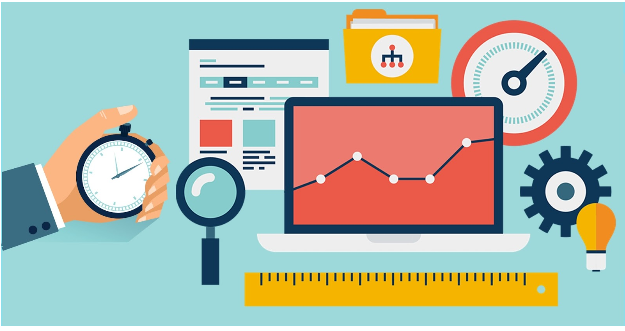How Smart Are Your Marketing Reports? The Value of Digital Marketing Benchmarking
Mature media channels have industry benchmarks like JD Power and Nielsen, but digital marketers have yet to catch up to this level of benchmarking and industry-wide comparison. Most brands and digital marketing agencies are only operating with a low level of Digital Marketing Intelligence (DMI). Consequently, when these brands and agencies report on their digital marketing campaigns, the reports lack context and insight.
Even though we now live in the age of Big Data, most digital agencies and brands are operating in the lower levels of DMI. The good news is that all it takes is a bit of commitment to start working your way up the ladder. This week’s format may look familiar as we’re sticking to the theme of DMI levels, but today the focus is solely on reporting (an essential part of any marketing endeavour).
DMI Level 1: Simple, One-Off Reports
Marketing agency life is hectic and brand clients move fast. Campaign after campaign must get out the door as quickly as possible, with barely any time to evaluate before you’re behind on the next project. Every campaign has some kind of data tracking going on. After all, there’s Facebook Insights, LinkedIn Ads reporting and all sorts of dashboards that automatically store data as a campaign runs. But most digital marketing data isn’t planned and catalogued well, nor is it standardized from one campaign to the next. Your brand manager is focused on getting things into market, and isn’t proactively planning how they will capture and organize the data that the campaign generates.
When it’s time for a meeting or a month-end report, numbers are pulled and sent. They may be the same KPIs as last time, they may not be. Does this sound familiar? Have you ever looked at a digital marketing report and wondered, “What does this actually mean?” Is $2.50 in media budget per contest entry a good rate? Is a 7% entry conversion rate for our contest page high or low for our industry? How does this cost per click compare to the last campaign? How many visitors did we have last month without the contest vs. this month with the promotion running?
DMI Level 2: Standardized Reporting
If your digital marketing reports seem a little thin and uninformative, then you’re not alone. But life gets better at Level 2. Digital agencies and brands at this level have implemented standards in their digital marketing reporting. They have a plan and a process for tracking digital marketing campaigns, and it shows in their reports.
For example, a digital marketing report that is operating at DMI Level 2 will tell you all the same KPIs as last month’s report did. This seems like it should be standard practice but surprisingly, many clients do not demand it and many agencies do not make streamlined KPIs a priority unless it is demanded.
Brands and agencies at DMI Level 2 have standardized format for their digital marketing metrics and KPIs, so they are able to pull historical comparisons. This sets the stage for moving on up to DMI Level 3.
DMI Level 3: Reporting with Insights – Internal Benchmarking
In order to reach DMI Level 3, digital marketing campaign reports have to be giving you actionable insights. They have to tell you how your KPIs and ROI compare to other campaigns. In an agency, this might even include reporting in comparison to other brands within the agency (anonymously, of course). This level of detail is needed in order to stimulate intelligent discussion around future tactics and strategy.
For example: it’s good to know the media cost per entrant for this month’s sweepstakes, but it’s much more valuable if you also know that this month’s media cost per entrant was 10% more expensive than last year’s sweepstakes, but still below the average of all similar sweepstakes that you’ve run over the last 3 years. It’s one thing to know the redemption rate of a coupon, but what if you also knew the redemption rates of similar coupons run in the past and how the current coupon stacks up to the historical average?
This kind of information is referred to as internal benchmarking, and it’s a very powerful and valuable capability. Imagine if you knew that offering a coupon with a value of $1.50 would garner 95% of the redemptions that a coupon with a $2.00 value would – you could save thousands of dollars! This is the value of operating at DMI Level 3.
DMI Level 4: Reporting with Context – Industry Benchmarking
As the digital marketing industry matures, we’ll see more and more agencies and brands demanding standardized reporting with insights; the payoff is simply too great to be ignored. But the most forward-thinking brand marketers will be operating at DMI Level 4: industry benchmarking. At this level, digital marketing intelligence is derived from industry data across many brands and agencies through a collaborative opt-in model. Only this level of competitive benchmarking can give you the true context of how your digital marketing campaigns are performing. When competitive benchmarking is used as a forecasting and planning tool, your brand has an advantage that puts it head and shoulders above the rest… well ahead of even the ones operating at a solid DMI Level 3.
Qoints was designed to help brand marketers move up this ladder quickly and set them up for continued digital success. Learn more about what Qoints does or contact us to set up a demo and find out how easy it is to start benchmarking today!

